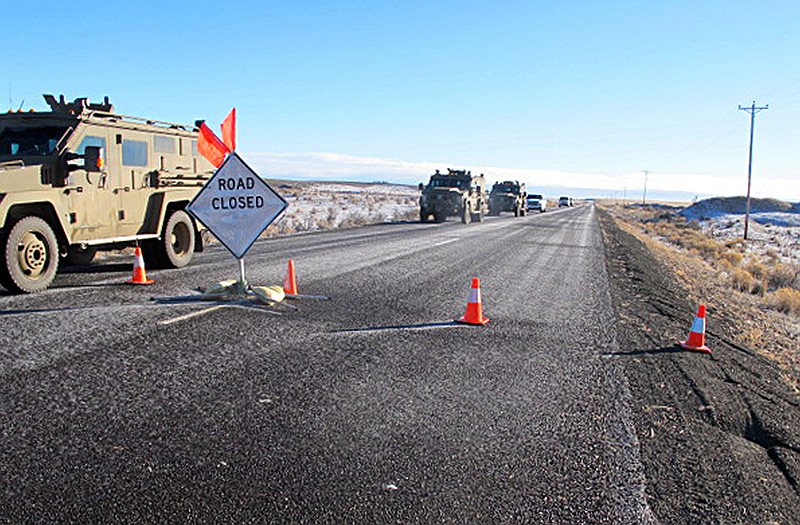Federal officials have allowed the armed occupation of an Oregon wildlife refuge to drag on for more than a month as part of a strategy learned from past standoffs in Texas and Idaho that ended in bloodshed and spurred more government mistrust, experts say.
Critics say the wait-it-out strategy sends a mixed message and can embolden others to lead takeovers. The decision to monitor from a distance the Oregon occupiers opposing federal land policy has not changed since Jan. 2, but U.S. officials are stepping up the pressure outside the refuge and in the courtroom.
Authorities arrested leader Ammon Bundy and others on a remote road when they left Malheur National Wildlife Refuge for a community meeting. The confrontation on Jan. 26 also led to the shooting death of an occupier, who the FBI says was reaching for a gun.
With four holdouts refusing to leave, the government went further, surrounding the refuge and getting the occupants added to an indictment charging 16 people with conspiracy to interfere with federal workers.
But the overall strategy is de-escalation, experts say.
"The federal response to sieges has changed dramatically since the early 1990s - authorities have been very careful to avoid turning the federal law enforcement response to such standoffs into a catalytic symbol for extremists to capitalize upon," said Brian Levin, a criminal justice professor at California State University at San Bernardino.
"This very small group feels empowered to seize, vandalize and destroy public property," said Eric Herzik, chair of the University of Nevada, Reno's political science department.
Federal analysts predicted that the government's hands-off response to a 2014 Nevada armed standoff led by Bundy's father, Cliven, over grazing rights would give impetus to others.
They claimed victory, which galvanized some groups, according to a 2014 report by the U.S. Department of Homeland Security's Office of Intelligence and Analysis.
Most occupiers cleared out after Bundy's arrest and the police shooting, but four remained and say they won't leave unless they receive assurances they won't be arrested.
Authorities have set up checkpoints around the refuge but have not forced out the occupiers.
"Their approach is - time is on their side," said Carl Jensen, a former FBI supervisory special agent who is director of the Intelligence and Security Studies program at the Citadel military college. "The first priority is to end it peacefully and not light a match to set it off."
That goal came about the hard way, following bloody standoffs in Ruby Ridge, Idaho, and Waco, Texas. They forced the FBI to re-organize and end its "militaristic" response and employ behavioral experts instead, said Levin, the California professor.
The strategy was tested in 1996 when the "Patriot" Freemen group held an anti-government standoff on a Montana ranch. After arresting the group while the leader was away from the compound, the FBI negotiated with the occupiers, who gave up after 81 days.
The options for the four remaining occupiers have diminished, he said.
"This gives authorities the flexibility to stand down," Levin said. "Some are critical of the wait-and-see approach, but it's well-thought-out and well-planned."
4 holdout occupiers at Oregon wildlife refuge are indicted
The four remaining occupiers at an Oregon wildlife refuge are facing charges, according to court documents released Thursday that say more than a dozen armed activists threatened violence against federal authorities and used social media to urge others to join them.
A newly unsealed indictment names 16 defendants, including the holdouts, standoff leader Ammon Bundy and other occupiers arrested last week. Also named is Kenneth Medenbach, who was arrested after being caught driving a government vehicle from the refuge to a supermarket.
The remaining occupiers are: David Fry, 27, of Blanchester, Ohio; Jeff Banta, 46, of Elko, Nevada; and Sean Anderson, 48, and Sandy Anderson, 47, a married couple from Riggins, Idaho.

